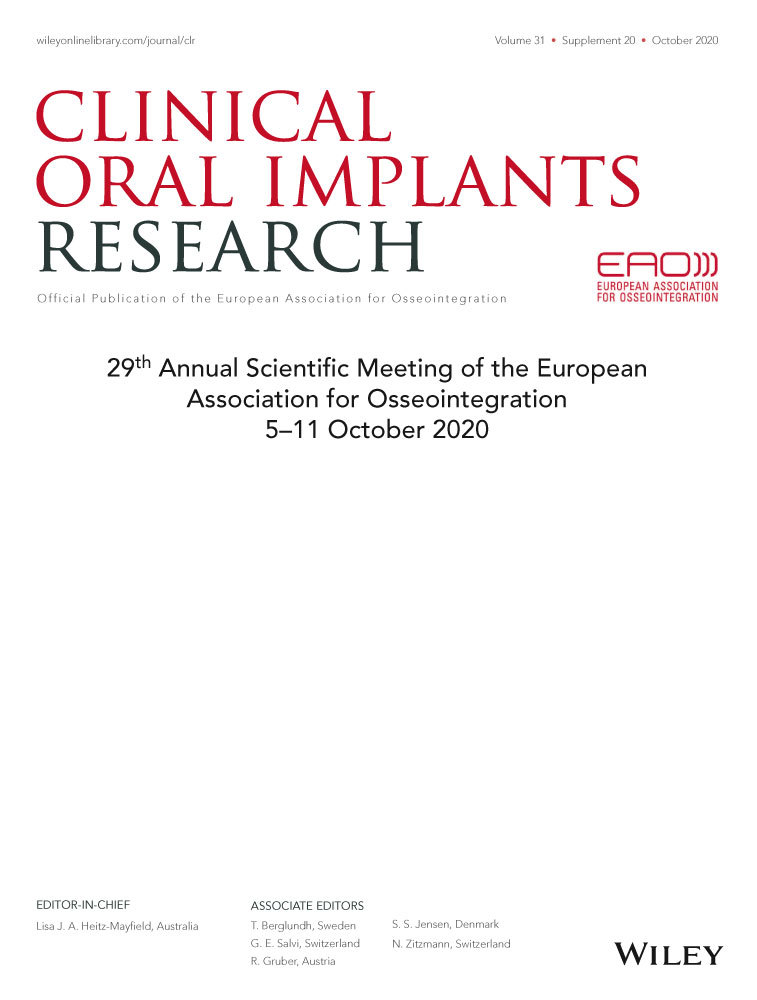Filling results of lateral approach of maxillary sinus bone augmentation with regard to sinus anatomical features
9NNB8 ePOSTER CLINICAL RESEARCH – SURGERY
Background: Maxillary sinus bone augmentation is a widely used procedure that is aimed to increase the vertical bone dimension. The lateral approach is more invasive and relatively challenging procedure and should be planned carefully using pre-surgical cone beam computed tomography (CBCT), in order to assess level of difficulty and risk. The clinical significance of this work is to pre-surgically evaluate the relation between the sinus different anatomical features and the expected results.
Aim/Hypothesis: To analyze retrospectively, using CBCT scans the influence of different sinus anatomical characteristics, such as: sinus width, residual bone height and sinus walls angle on different bone filling parameters.
Materials and Methods: 51 post-operative CBCT scans of maxillary sinus augmentation- lateral approach were analyzed 6 to 9 months postoperatively, before implant installation. The surgical procedure: the lateral sinus wall was exposed an antrostomy was performed using a rotary bur. The schneiderian membrane was reflected up to the medial wall. After examining for perforations, all sinuses were filled with xenograft bone substitute the window was covered with a collagen membrane. Radiographic analysis on cross-sectional cuts using AB Dentpax Viewer software. In many cases the filled bone has a shape of a dome with a lateral drop, near the buccal wall and a medial drop, near the nasal wall. Analyzed parameters were: maximum sinus width, maximum augmentation width, augmentation fill height measured from alveolar bone crest, and measured from sinus floor and measured from maximum augmentation width, medial drop, and lateral drop. Bucco-palatal sinus wall angle was measured as well, using Digimizer software.
Results: 44 patients with 51 sinuses were successfully treated and evaluated. The sinuses anatomic and filling results were: maximum sinus width range: 12.31-26.75 mm, the mean maximum augmentation width: 13.64 ± 1.99 mm. Augmentation fill height measured from alveolar bone crest range: 9.96-20.34 mm, the mean medial filling drop: 4.51 ± 2.11 mm, lateral drop was 2.06 ± 1.35 mm which is 42% and 19.2% from the maximum filling height respectively. The average sinus angle was 51.99°. Significant positive correlations were found between: sinus maximal width and maximum augmentation width, medial drop, lateral drop and between the later. As well as, between augmentation fill height measured from sinus floor and maximum augmentation width, and the lateral drop. It was found that there is a significant medial and lateral drop in sinuses wider than 15 mm in comparison to narrower sinuses The sinus width has no effect on sinus height fill as measured from sinus floor. Lateral drop wasn't affected by sinus angle.
Conclusions and Clinical Implications: Pre-surgically evaluation of sinus different anatomical features may predict the expected bone augmentation results. In sinuses wider than 15 mm, both the medial drop and lateral drop of the bone filling is significantly higher than narrow sinuses. The medial drop is significantly higher. The clinical relevance of such findings is that in wide sinuses, regardless of the sinus angle, we should make an effort and try filling carefully and reach the medial wall.
Keywords: maxillary sinus, sinus floor bone augmentation, lateral sinus floor elevation, cone beam CT




